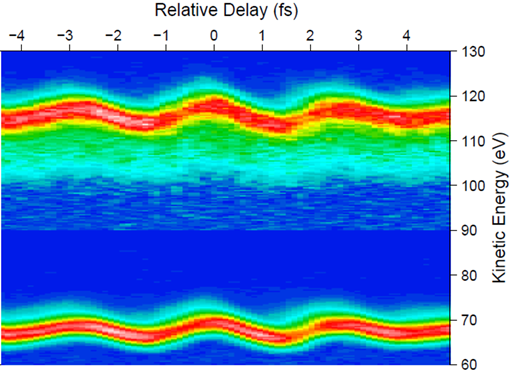Attosecond science – from the beginning to measuring electron dynamics in molecules, solids and layered systems
- Colloquium

Attosecond science – from the beginning to measuring electron dynamics in molecules, solids and layered systems
The generation and measurement of single isolated attosecond pulses in the extreme ultraviolet (XUV) at the beginning of this century has recently been awarded with the Nobel Prize in Physics [1]. This talk will give a historic review since the beginning of attosecond science and its impact on the understanding of electronic processes on the attosecond timescale.
A pump/probe technique, “attosecond streaking” [2], was used to investigate electron dynamics on surfaces and layered systems with unprecedented resolution. Photoelectrons generated by laser based attosecond extreme ultraviolet pulses (XUV), are exposed to a dressing electric field from well synchronized few-cycle infrared (IR) laser pulses. The energy shift experienced by the photoelectrons by the dressing field is dependent on the delay between the XUV pulse and the dressing field and makes it possible to measure the respective delay in photoemission between electrons of different type (core electrons vs. conduction band electrons, Fig. 1). The information gained in such experiments on tungsten [3] triggered many theoretical activities leading to different explanations on the physical reason of the delay. Attosecond streaking experiments have been performed on different solids [4,5], layered structures and liquids, resulting in different delays – also depending on the excitation photon energy. These measurements lead to a stepwise increase of the understanding of different physical effects contributing to the timing of photoemission. In this presentation, an overview on the different physical contributions to attosecond time delays in photoemission will be given. The “absolute” time delay, i.e. the delay between the instant of ionization and the emission of a photoelectron will be discussed and latest measurements will be presented.
[1] M. Hentschel*, R. Kienberger* et al., Nature, 414, 509 (2001)
[2] R. Kienberger et al., Nature 427, 817 (2004)
[3] A. Cavalieri et al., Nature 449, 1029 (2009)
[4] S. Neppl et al., Nature 517, 342 (2015)
[5] M. Ossiander et al., Nature 561, 374 (2018)










